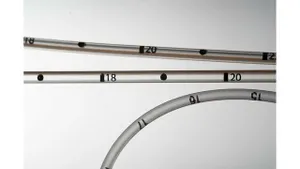All-electric system gives injection molder capability to produce recyclable PET dessert pots
Looking to develop an industry first recyclable thin wall PET premium dessert pot for the food industry, injection molding specialist Patterson & Rothwell purchased a fully-electric IntElect 160 Smart machine from Sumitomo (SHI) Demag (Chiba, Japan) to accomplish its goal.
September 16, 2015
Unlike standard dessert pots for yogurts and mousses that have been injection molded from general purpose polystyrene (GPPS), these recyclable PET pots don’t crack easily and can be recycled, which is something entirely unique in the marketplace. After two years of dedicated research, the UK-based company was able to produce a stable production of recyclable PET pots that are 0.4mm thinner than GPPS dessert pot, but it wasn’t without its challenges.
After two years of dedicated research, the UK-based company was able to produce a stable production of recyclable PET pots that are 0.4mm thinner than GPPS dessert pot, but it wasn’t without its challenges.
“Everyone doing PET was telling us this couldn’t be done,” recalls Dave Bowden, Sales and Marketing Manager at Patterson & Rothwell.
The reason for this pessimism was that producing a commercially viable PET container was a challenge from both a technical and a cost perspective. “Because the cost of the wall section would make the PET pot prohibitively expensive, we knew we had to produce a thin wall pot in order to maintain the same price point as a GPPS pot,” adds Bowden.
The pots also needed to be produced at a constant rate and utilize the multi-cavity process of at least eight impressions per cycle, to make them cost effective.
With the concept still in its early stages, Patterson & Rothwell was hesitant to invest in a custom-built machine. Instead, they ran test runs using their in-house hydraulic machine, equipped with twin accumulators to speed up cycle time. The hydraulic machine, however, could only manage to fill four out of eight cavities, as it simply didn’t have the pressure capabilities necessary for producing thin wall PET.
“The product was sticking to the side of the tool because there wasn’t enough pressure to eject it from the mold,” Bowden explains.
Not to be defeated, Patterson & Rothwell’s next tack was to try an all-electric machine from injection molding equipment specialist Sumitomo (SHI) Demag to see how it fared.
The results achieved with the IntElect Smart 160 tonne machine were a pleasant surprise. The same tool that had achieved four impressions in 25 seconds on a hydraulic machine managed eight impressions in 17 seconds on the electric machine.
“The IntElect Smart enabled us to run the tool on far greater cavitation, filling all eight molds, whilst reducing cycle time by 20-25%. Being able to run the machine on all eight cavities was essential for the costings of the project,” said Bowden.
He also credits Sumitomo (SHI) Demag’s activeFlowBalance technology, recently shortlisted in the 2015 Plastics Industry Awards (PIAs) Best Technology Application category, which automatically balances out filling ratios, for the favorable results.
“This feature is quite unique in that it uses the compression of the melt inside the barrel to stabilize the pressure, resulting in in partially-filled cavities being filled by the expanding melt. This means equal pressure is applied to each cavity, which stops the plastic from sticking to the mold,” said Bowden.
In March this year, Patterson & Rothwell purchased the IntElect 160 Smart, giving it the capabilities to produce recyclable PET pots in a variety of shapes and sizes with walls as thin as 0.8mm—that is 0.4mm thinner than the walls of the GPPS pots that are commonplace in the food industry.
The energy consumption savings that can be achieved with Sumitomo’s IntElect 160 machine made it economically viable for the injection molder. On average, the IntElect 160 consumes 0.40 kWh per kg of processed plastic material, compared with typical power consumption of 0.84 kWh per kg on a hydraulic machine.
The company is setting its sights on selling the new pots to the premium dessert industry. There have been several major retailers already having expressed an interest in the pots.
“The retailers are driving this—they are pushing for different shapes and for packaging that is recyclable. Several have already shown an interest and we are anticipating that many more will follow suit. Ultimately we are predicting an industry-wide shift to PET, and within six months from now we expect our new IntElect machine to be operating at full capacity. The future is looking very exciting for us, and this machine is a major contributing element to this,” said Bowden.
About the Author(s)
You May Also Like


